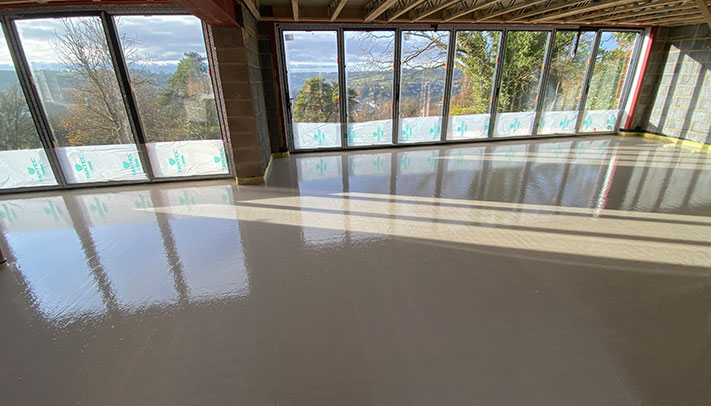What are the different types of floor screeds?
The type of screed you employ will be determined by the type of concrete base, your surface expectations, and the standard of your foundations.
There are three main types of screed on the market: bonded, unbonded, and floating, all of which may be applied using liquid and classic screed methods.
- Bonded: This is attached to the concrete flooring (substrate) using an adhesive. To ensure proper application, the concrete surface must be roughened and a bonding agent carefully applied. This narrower application generally ranges between 25 and 40mm.
- Unbonded: Laid over a PVC/damp-proof membrane that separates it from the concrete base, this surface is an ideal alternative in buildings where dampness is a major issue. This type of screed is suited for thicknesses of more than 50 mm.
- Floating screeds: These unbonded surfaces are commonly employed to strengthen an acoustic or thermal layer. To stay effective and long-lasting, the floating screed must be at least 65mm thick.
Liquid Screed
Liquid screed is a substitute for the sand and cement screed in Manchester. Once water is introduced, a reaction ensues, producing gypsum until the calcium substrate is exhausted. This results in an extremely durable, self-levelling subfloor that may be used with any type of flooring.
This type of screed has a minimal environmental effect and provides several advantages over standard screeds. They are pumped, free-flowing, and may be installed in bays up to 1000m2 without the need for any expansion joints to decrease movement. They have double the thermal conductivity of typical screeds, making them suitable for floor heating applications.
Traditional Floor Screed
Traditional sand cement screed in Manchester is commonly used in projects of all kinds, ranging from residential to large-scale industrial and commercial applications. Mesh and/or fibres can be utilised to boost strength and durability while also reducing shrinkage cracks.
Advantages of Liquid Screed
Low labour expenses: Because the liquid screed in Manchester is poured from a hose, it can be laid over ten times faster than a typical sand and cement screed surface, reducing total labour costs.
Cost reduction: Thin application depths as low as 35mm further cut costs. With underfloor heating, total depths might be as low as 45mm, which is still considered thin by normal standards.
Pumped liquid screeds are efficiently self-levelling and self-curing, resulting in a smooth surface. This is excellent for repairing precast concrete beams and block floors with camber that may pose issues when placing the final floor surface.
Suitable for underfloor heating: The liquid consistency surrounds the pipes, avoiding cavities and improving heat transfer between the pipes and the screed.
The kind of screed you pick will have a significant influence on the outcome of your project, therefore we recommend that you speak with our staff at UK Screeds Ltd before scheduling so that we can assist and guide you through the decision-making process.








